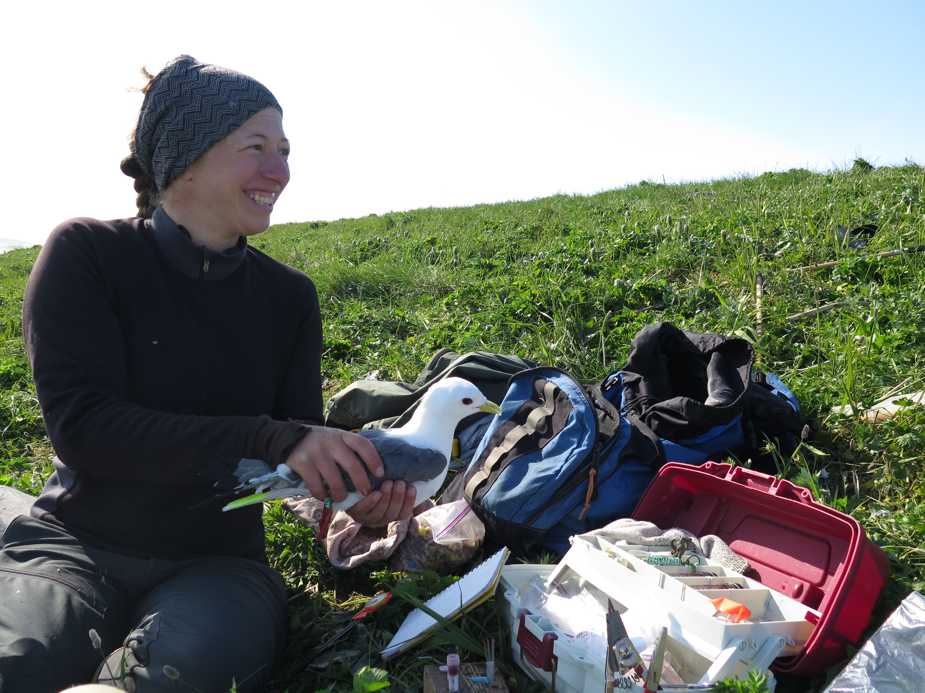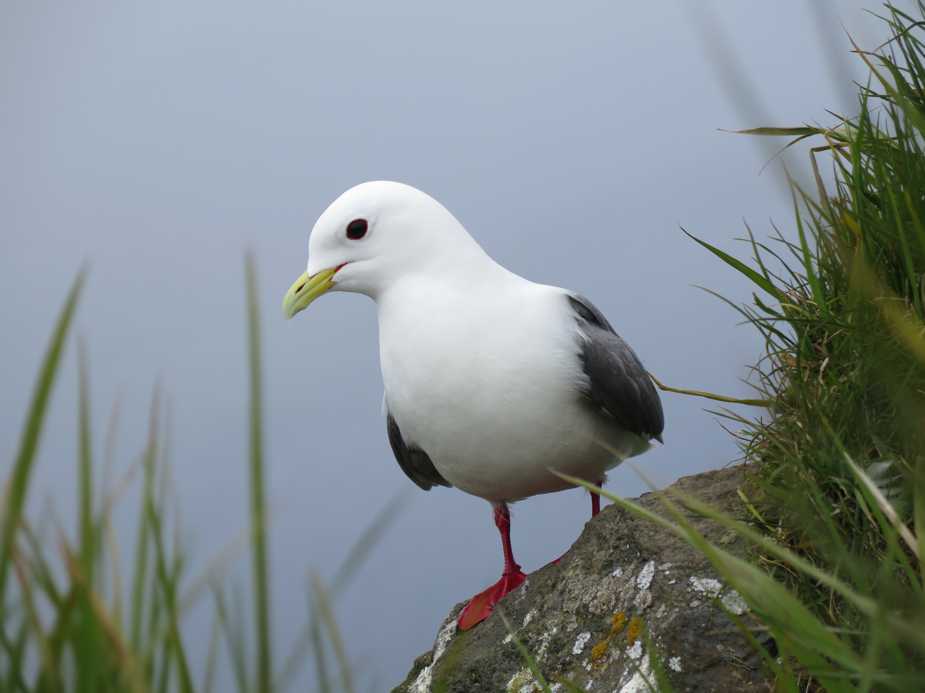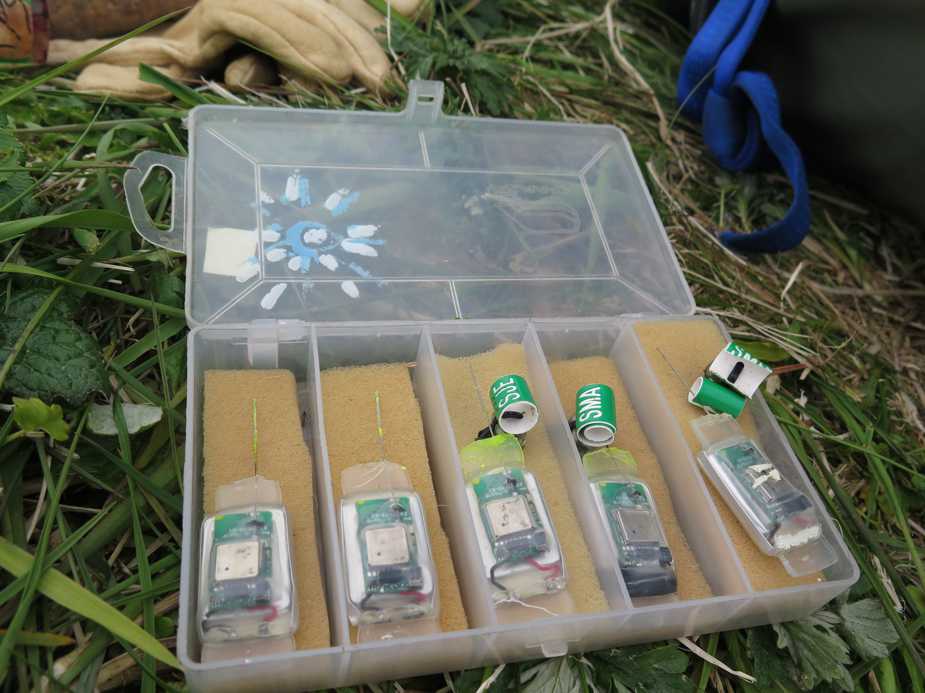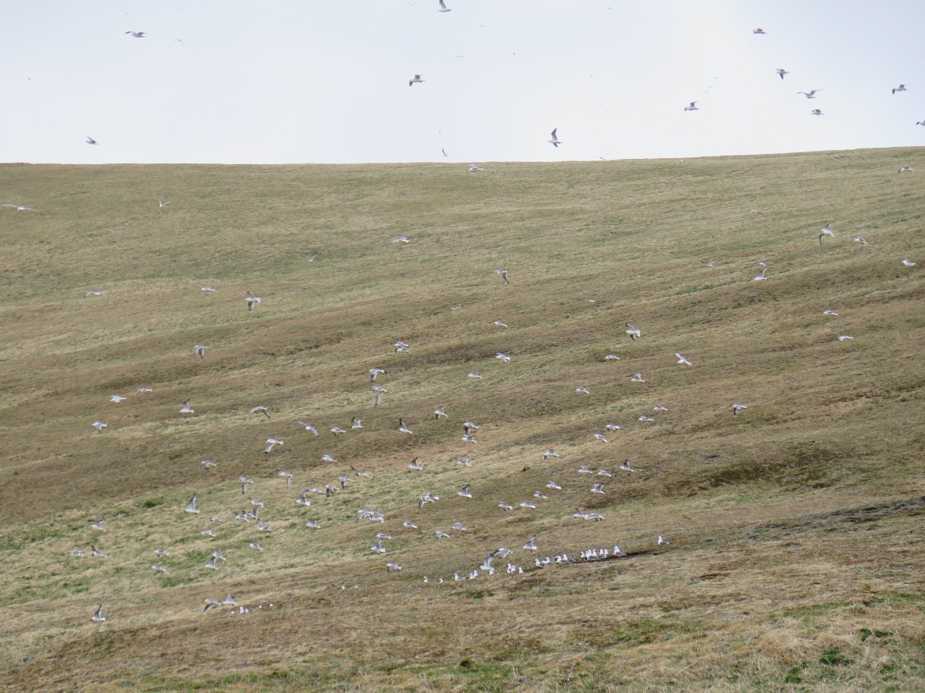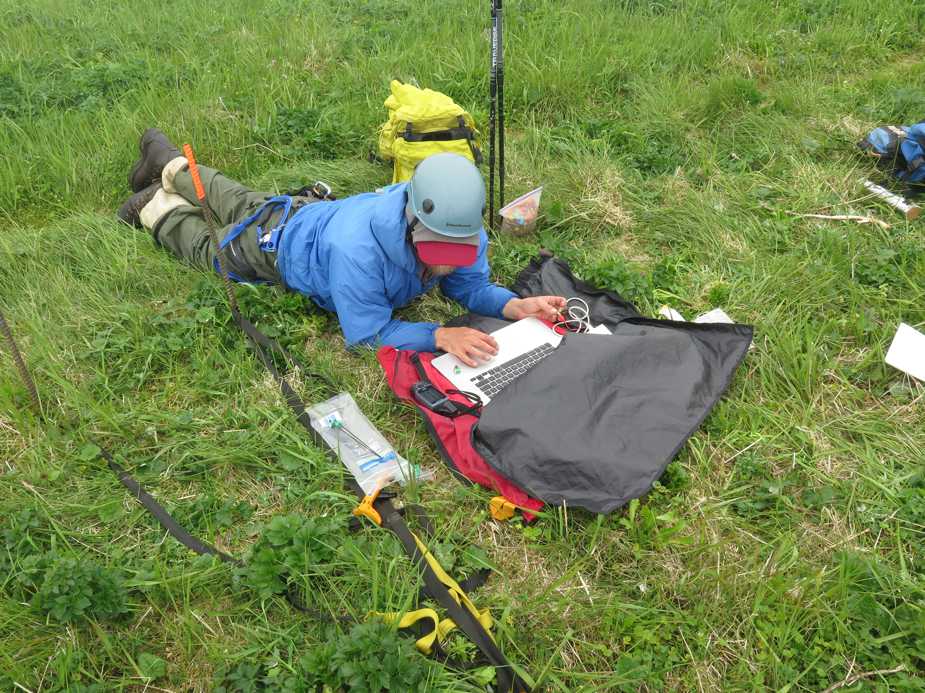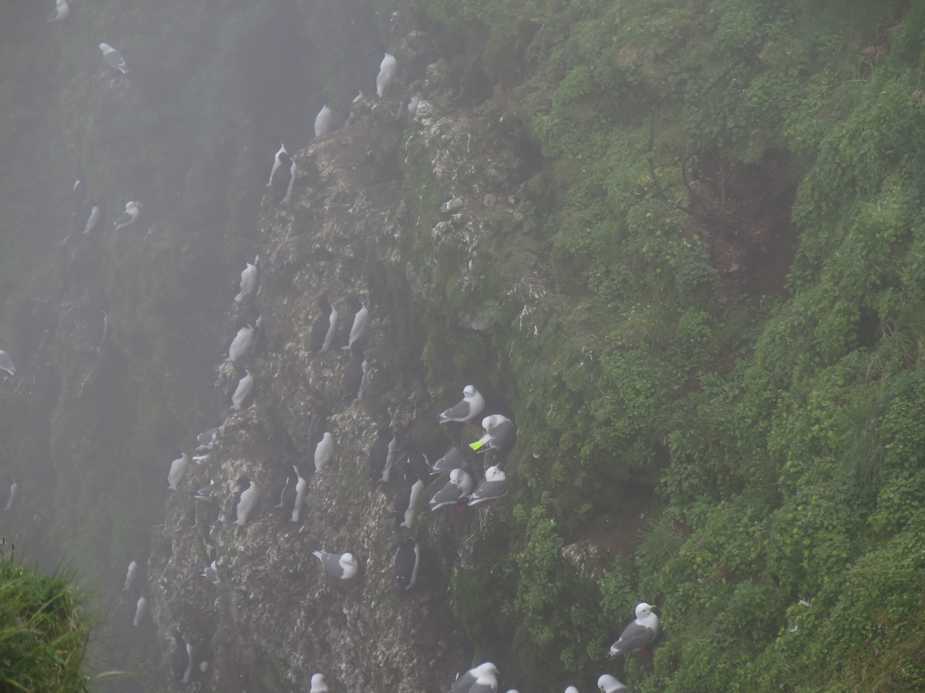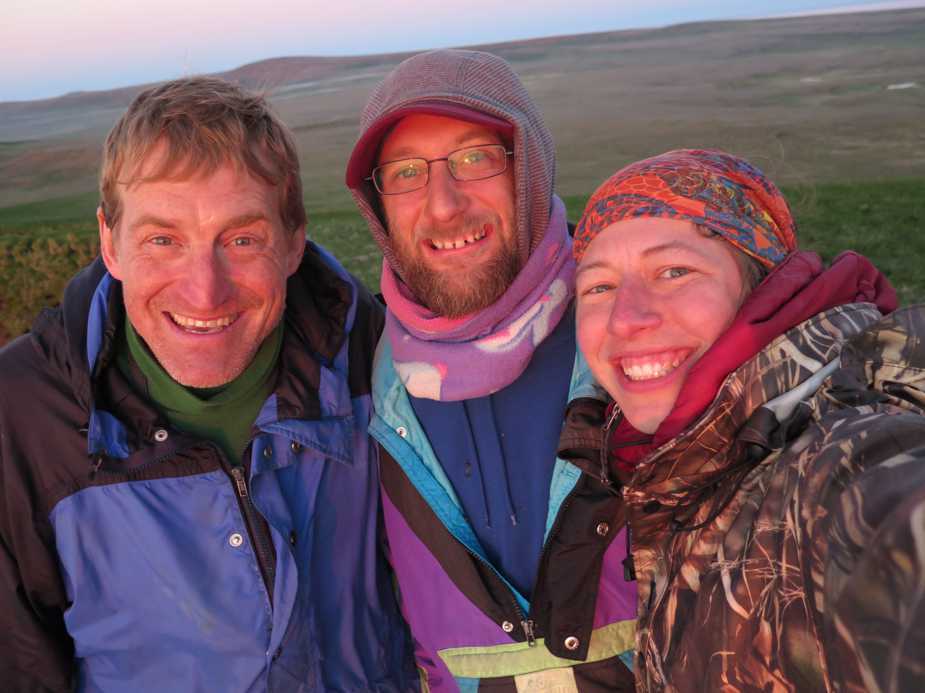Here’s a flashback to the 2015 field season studying red-legged kittiwakes breeding on St. George Island, by Rachael Orben:
In early May (before the grass had really started to turn green) Abram and I arrived on St George. We even managed to land on our first flight!
We started our field-work by scouting out the cliffs, with help from Marc Romano and the Refuge’s team, to identify a few potential places to catch birds. It took a few days for our equipment to arrive, but we were happy it all arrived as quickly as it did. Because we are interested in following the behaviour of kittiwakes during the pre-lay period, we had a deadline to catch all our birds before they laid their eggs! Luckily for us, kittiwakes spend time on the cliffs before they lay they eggs, busily building a good nest out of mud and vegetation and guarding their nest-site from other kittiwakes waiting to take over prime nesting real-estate. We managed to catch 10 birds on their nest during this time, and successfully attached GPS loggers to their tail feathers. This was a new experience for me, but all of the birds returned to their nest after about a week and we were able to recatch them to remove the GPS logger and download the data that will show us where the birds spend their time and find their food during the pre-lay and incubation period. It was pretty amazing how successful this part of the study was. I think the birds were easy to catch because they were all returning back to their nests in preparation for nest building and egg-laying.
Our study species, the red-legged kittiwake. Endemic to the Bering Sea.
A box full of GPS loggers just retrieved from kittiwakes, so much data!
Eggs were laid a bit late this year, and Dean arrived in early June just in time to witness the flurry of nest building. It was a really an awesome time to be in the kittiwake colony. We watched streams of birds flying up and over High Bluffs to tear-up patches of tundra and then fly back to their nests holding nesting material in their bills. Once they get back to their nests they pat the material down with their red feet so the whole cliff is full of birds going pat, pat, pat. So much activity! I was amazed to see that the birds from the village cliffs go to grassy patches between the houses to get nesting material.
A nesting material frenzy on the back-side of High Bluffs, St. George Island.
Once the eggs were laid we caught more birds to track with GPS loggers. Unfortunately, nests started failing (adults stopped incubating) almost as soon as eggs were laid. This made our work especially difficult because birds that abandon their breeding attempt often make longer trips and are harder to recatch at the colony. However, after many long hours waiting for birds to come home again, we were able to recatch 32 birds.
Reprograming loggers in the field is safer while roped in and wearing a helmet.
Back at the nest in the fog!
The weather was really spectacular during June, but in early July we had about a week where it was so foggy on the top of High Bluffs we could hardly see if our birds were home. It really helped that we painted their tails very bright colors, and we could usually just make them out through the fog! Overall the field season was a very successful, scientifically interesting, and really fun. I am looking forward to next summer when we get to do it all over again!!
The red-legged kittiwake team on the top of High Bluffs at midnight in mid-June, from left to right: Dean Kildaw, Rachael Orben and Abram Fleishman.
Rachael’s next blog post will include some GPS tracks so we can see where the tracked birds actually went during the pre-lay and incubation period. Stay tuned…

